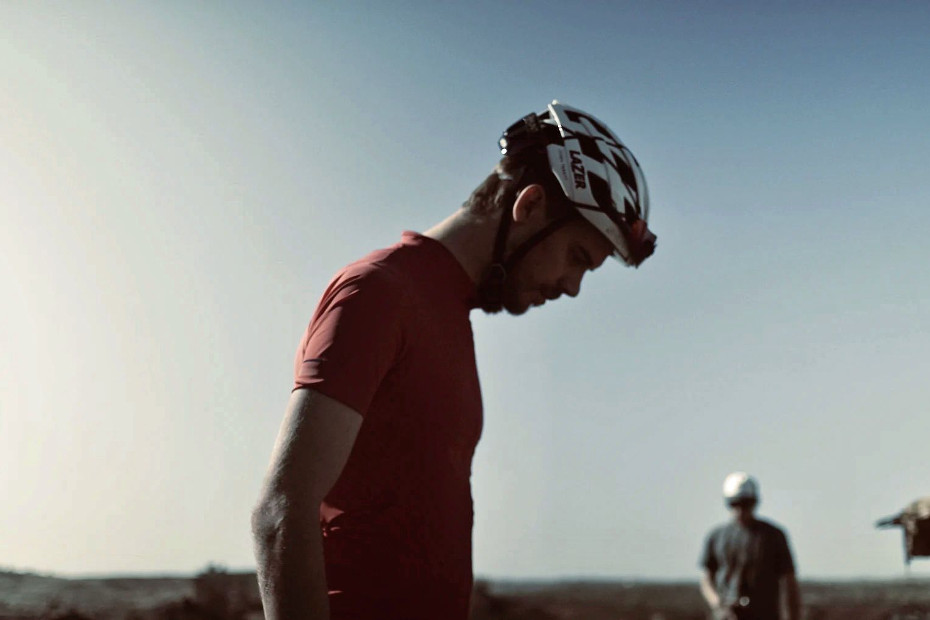When talking to ultra-distance rider and Shimano Alliance member Josh Ibbett, it’s often easier to ask where he hasn’t ridden his gravel bike, rather than where he has. Until recently, the answer would have included the Alentejo, a remote bit of coastline, punctuated by wheat fields and wildflowers in Southern Portugal that rarely appears on anyone’s radar. We sat down with Josh to find out what drew him to these lesser-known dusty dirt tracks and why he plans on returning.

“If you like moving fast through the landscape, covering a big distance, and leaving a plume of dust in your wake then this is the place for you.” –Josh
So, where are we?
The Alentejo is a region in Southern Portugal with dusty inland plains and a big stretch along the Atlantic Coast. Its name in Portugese translates into ‘beyond the Tagus’, referring to the Tagus River that runs across Portugal from its border with Spain to the sea in the capital of Lisbon.


It has some of the quietest stretches of coastline in Portugal–totally at odds with the resort-heavy Algarve to its south. Head inland away from the swoon-worthy surf and you discover that the bulk of the region is dry and arid. With just a few major towns (the beautiful ancient Roman city of Evora is the biggest), the Alentejo is predominantly rural and fairly undeveloped compared to the rest of the country. The census proves it: compared to the rest of Portugal, population density in the Alentejo is sparse. Once reliant on its agriculture, many of the younger generation have left to find work in the big cities and coastal areas. As a result, the Alentejo is left with blissfully quiet roads and a sprawling network of farm tracks that wind through the landscape.

“Remote farm tracks = gravel heaven”
If you like moving fast, covering a big distance, and leaving a plume of dust in your wake,then this is the place for you. Study a map closely and you will see that most of the roads in the area have farm tracks running parallel, so it doesn’t take too much work to piece these together to create a route of your desired distance. If you are lucky you might end up passing a winery for a refreshing break,but failing that, you will find a small bar or restaurant in every village that serves a Plato del Dia (dish of the day). The food is reflective of the area’s way of life: simple and no-nonsense,it is designed to fill your stomach, whether you’re part-way through or at the end of a hard day’s work. For gravel riders, this conveniently makes excellent fuel for a long day in the saddle. And did I mention that you can get a beer for a Euro?

Beyond farm tracks and food, what else is there?
Dig a little deeper and you find some historical gems to spice up your gravel ride. After you’ve done the obligatory tick-list of Roman ruins and UNESCO World Heritage sites, there are some far more intriguing and darker ruins to see. Sitting near the banks of the Guadiana River and not far from the Spanish border, the Minas De Sao Domingos was originally mined by the Romans for silver. However, in the height of the British Empire in the late 1800s, the mine was recommissioned to dig for copper ore. At one point this huge mine was supplying most of the UK’s copper. As it was being delivered by sea, the Portugese had to build an 11-mile stretch of railway. Unfortunately –as is so often the way – mining is rarely carried out sustainably and the mine was so exploited that eventually the copper ran out. All that’s left today are the eerie remains of the smelting plant and the recovering landscape; the good news is that nature is fighting back to its former glory and that there are now another 11 miles of prime gravel waiting to be ridden.

OK, you’ve sold us on the Alentejo. How do we get there?
While easily accessible by train from the Algarve and Lisbon, you would be doing yourself an injustice if you didn’t pack your belongings onto your gravel bike and take your time. Clear your schedule and map a route. Compared to the rest of the country it is relatively cheap, and I would argue much more beautiful (although be aware of the wind coming in from the Atlantic). After riding many kilometres over multiple days, I felt like I’d seen a more authentic side of Portugal. Outside of the high season, this place has a lot going for it if you want to get a real feel for the country and explore off the beaten track.






